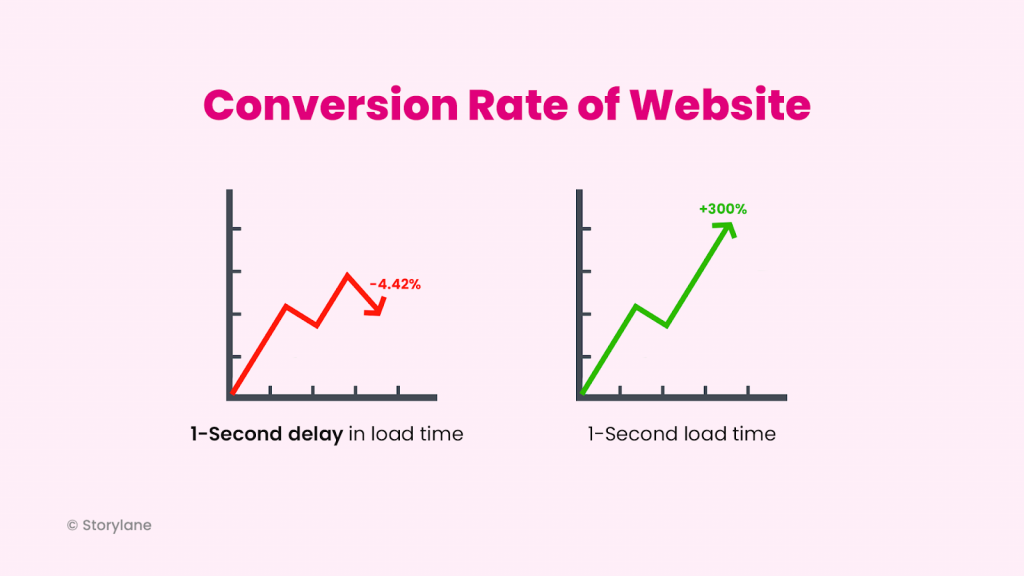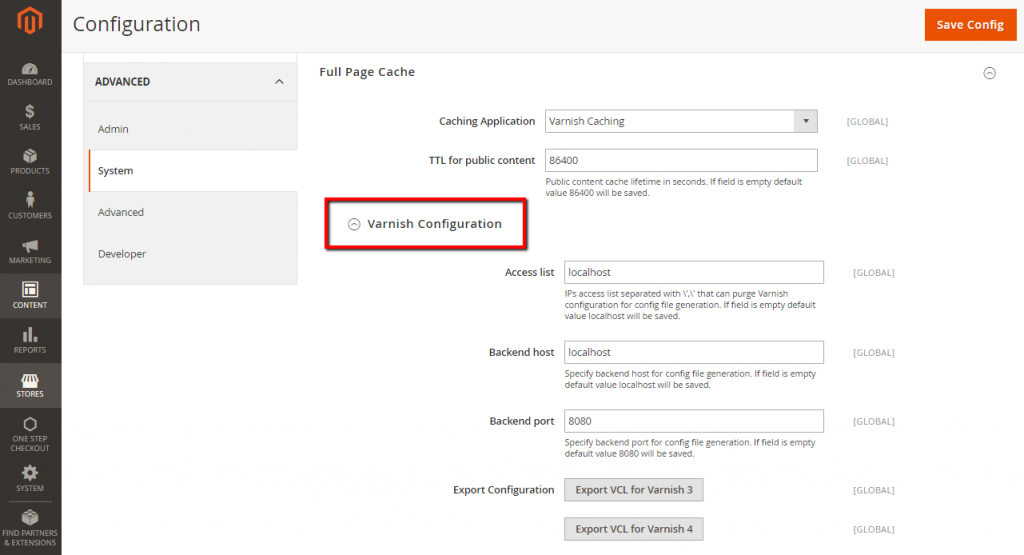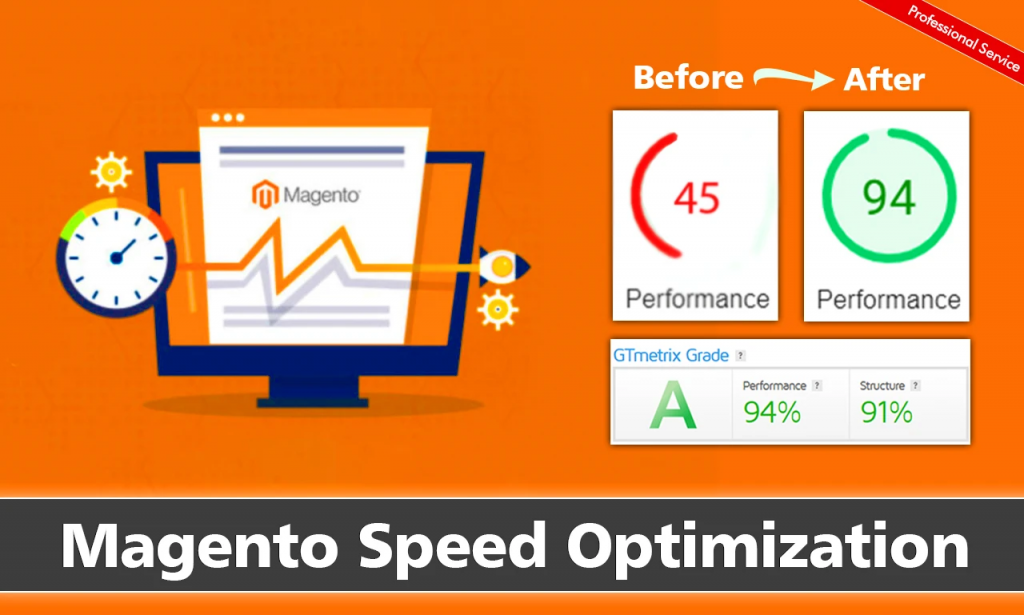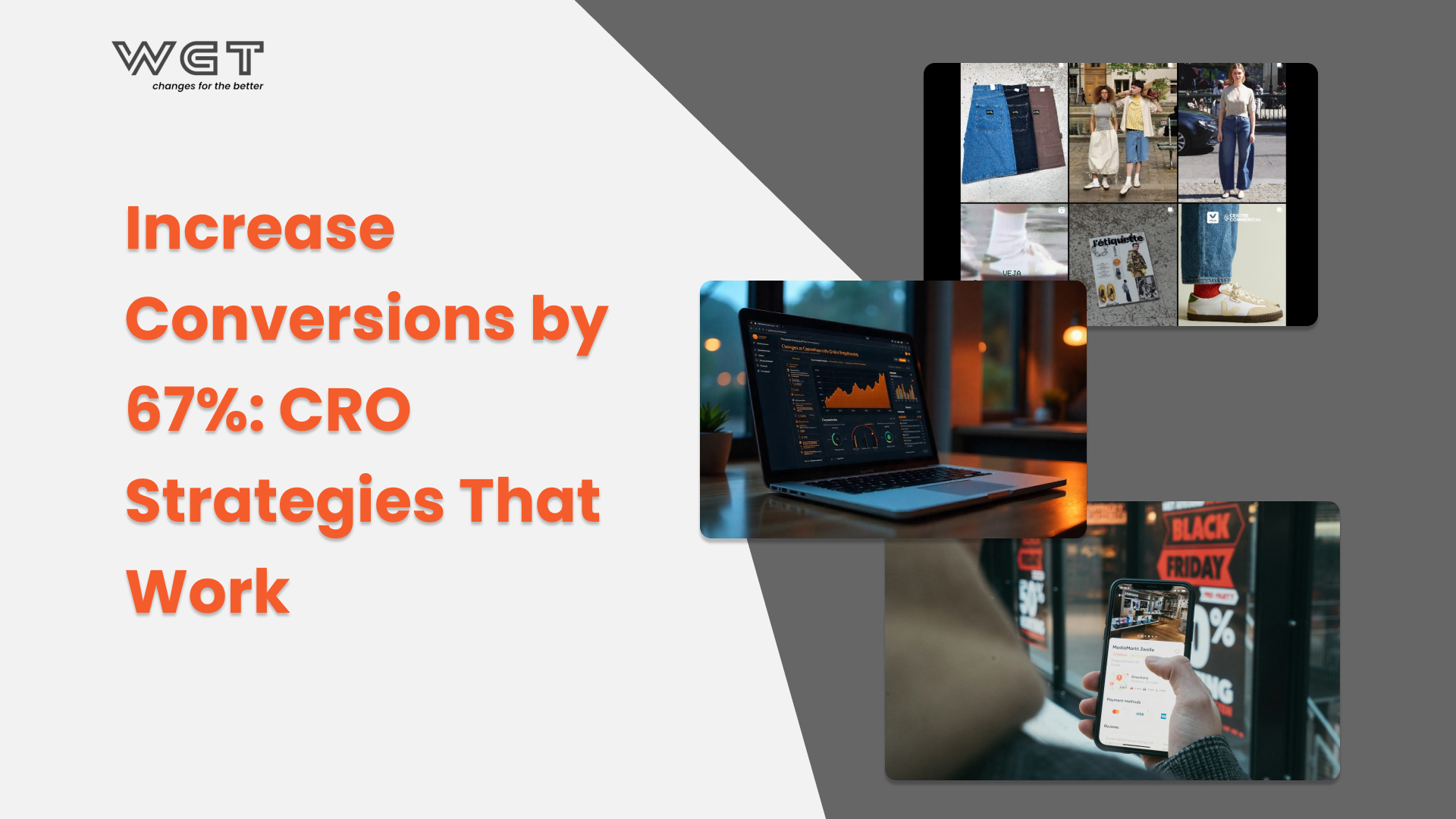
Magento speed optimization can be a major boost for eCommerce revenue. Shoppers have high expectations for online stores, thus a slow e-commerce website can quickly turn them away. However, the question of how to make speed improvements keeps many store owners from optimizing their sites correctly. So, what are some ways to achieve Magento 2 speed optimization, and how can this decision deliver a better user experience? Read more to discover the importance of speed.
I. Why should you focus on Magento speed optimization?
In the dynamic realm of e-commerce, where competition is fierce and customer expectations are ever-rising, website optimization stands as a cornerstone of success. While the technical aspects of speed enhancement are undoubtedly crucial, it is essential to delve into the compelling reasons why such endeavors are worthwhile. Here, we unravel the multifaceted the most important reasons for optimizing your e-commerce website.
- The initial five seconds of your website’s loading time play a crucial role in determining conversion rates.
- The conversion rate decreased by 4.42% with each added second of loading time between 0-5 seconds, and the highest one occurred for pages with 0-2 seconds of loading times. This means that a website that takes 5 seconds to load will have a lower rate conversion rate of 22.1% than a website that takes 1 second to load.

- Nearly 70% of consumers state that a website’s page speed affects their willingness to purchase from an e-commerce website.
- Google’s algorithm heavily weights page speed, thus the quicker your pages load, the more likely it is that you will appear higher in search engine results.
II. How to speed up a website: 10 practical ways to achieve Magento speed optimization
To optimize the speed of your e-commerce website without investing time and effort, avail of Magento speed optimization service and enhance the shopping experience of customers. Applying the 10 strategies below, your business can overcome these challenges and ensure your Magento 2 store delivers an optimal shopping experience for your customers.
1. Keep Magento updated
Ensuring Magento 2 is always up to date is a key approach to achieving speed improvements. Magento updates include performance enhancements, patches, and other necessary features and resources to keep it functioning properly and to avoid poor loading times caused by out-of-date systems. Keep up with the latest versions to make sure you’re using the most recent update of the platform and keep customers happy with their site experience.
2. Set up a content delivery network
A content delivery network (CDN) places multiple server nodes in various geographic locations, improving scalability, offloading bandwidth due to large files, reaching a global audience efficiently, mitigating DDoS attacks, and enhancing reliability. In addition, it makes the website more attractive to customers and encourages them to stay longer. However, unlike your site’s cache, a CDN needs to be configured manually since it’s not automatically integrated into Magento.
Step 1: Access Configuration Settings
- Navigate to Admin > Stores > Settings > Configuration in your Magento dashboard.
Step 2: Configure Base URLs
- Select General > Web on the Configuration page.
- Open the Base URLs section.
- Enter the URL of your CDN’s static view files in the Base URL for Static View Files field.
- Enter the URL of your CDN’s JavaScript files in the Base URL for User Media Files field.
Step 3: Configure Base URLs (Secure)
- Open the Base URL (Secure) section.
- Enter the URL of your CDN’s static view files in the Secure Base URL for Static View Files field.
- Enter the URL of your CDN’s JavaScript files in the Secure Base URL for User Media Files field.
Step 4: Save Configuration
Click the Save button to apply the CDN configuration changes.
3. Use full-page cache and enable Varnish cache
Varnish Cache functions as an intermediary between web clients and web servers, effectively operating as a caching HTTP reverse proxy. Rather than directing every content request directly to the web server, Varnish assumes this responsibility, enhancing overall performance by alleviating the burden on the web server.
Activating Varnish and full-page cache is another way to make your Magento 2 website load faster. With a full-page cache, you may dramatically reduce loading times by creating cached versions of your site’s pages for users instead of executing separate queries for every request from users. As a result, your website responds to identical user requests with the same HTML, saving you time and effort by avoiding the need for additional queries or back-end processing.
However, Varnish works better than files when it comes to handling the process of enabling a full-page cache for your website. A web program called Varnish Cache can reduce the amount of network bandwidth used by your site and its overall response time. The following procedures can be used to enable Varnish Cache after installation: Stores > Configuration > Advanced > System > Full Page Cache > Caching Application > Varnish Caching
Full-Page Cache/ Source: Mageplaza
4. Optimize images
For photos on your website, use compressed images and file formats such as JPG, which will help to reduce file size and provide speed improvement in page load times.
Instead of depending on CSS resizing, get your image’s source file downsized to the ideal size. Striking a balance between image quality and size is crucial for e-commerce websites. High-quality images effectively showcase products, while smaller file sizes ensure faster page loading times and a seamless user experience. Achieving this balance requires a strategic approach that considers both technical and aesthetic aspects. Also, it is vital to use the correct file type – items should be in PNG, JPEG, or GIF format, and your site’s logo should be in PNG or SVG. Below are the differences among these image files.
PNG: A lossless compression format that preserves high image quality, able to result in larger file sizes
JPEG: A lossy compression format that results in smaller file sizes, good for photographs and images with complex details and color variations, introducing artifacts, especially at high compression levels
GIF: A lossless format that supports animation, good for small, simple animations and icons, limited color palette
SVG: An XML-based vector graphic format that is scalable to any size without losing quality, more complex to create and edit than raster formats
5. Re-Index products
Products that are not properly indexed will not appear correctly and may cause your website to slow down. Re-indexing these products will consolidate scattered data into a single database, improving the overall performance of your e-commerce store.
This is a relatively simple process. You can begin re-indexing in Magento Admin by following these steps:
- Access Index Management:
- Log in to your Magento Admin panel.
- Navigate to System > Index Management:
- From the top menu bar, select “System.”
- Select Product Indexes:
- In the left-hand panel, locate and click on “Index Management.”
- Choose Product Indexes for Re-indexing:
- In the “Index Management” section, identify the product indexes that require re-indexing. Typically, you’ll need to re-index the “Catalog Product Flat” and “Catalog Product Category Flat” indexes.
- Initiate Re-indexing Process:
- Select the checkboxes next to the indexes you want to re-index.
- Choose Re-indexing Mode:
- From the “Action” dropdown list, choose “Reindex.”
- Confirm Re-indexing:
- Click on the “Submit” button to initiate the re-indexing process.
6. Eliminate unused data
The Magento Datalog collects critical information about your products, but it still retains unnecessary data, which might slow down the loading time of your e-commerce website. For example, you may have data accumulated, such as details on products you no longer sell, but which occupy disk space. It is vital to delete this data in order to keep your pages loaded quickly and maintain consumer happiness.
In a few simple actions, you can clear up your Magento Datalog and experience noticeable speed improvements. Select System > Configuration > Advanced > System from the Admin Panel. Expand the MySQL Message Queue Cleanup option and configure the various properties. Once you’ve entered all of the necessary information and are ready to go, save the settings.

7. Select a hosting provider
E-commerce websites, particularly those built on Magento, demand robust hosting solutions to ensure optimal performance and responsiveness. To prevent sluggish loading time and disappointing user experiences, Magento websites require a hosting provider that can accommodate their unique resource demands. Two prominent hosting providers that cater to these needs of Magento websites are Amazon Web Services (AWS) and Nexcess. These platforms offer a range of features and capabilities tailored to Magento’s specific requirements, ensuring seamless operation and scalability.
AWS is a comprehensive cloud computing platform offering a wide range of services, including Magento hosting. The utilization of Nexcess for Magento e-commerce solutions offers several benefits such as:
- Scalability: AWS’s elastic infrastructure can seamlessly scale up or down to meet fluctuating traffic demands, ensuring your Magento website remains responsive and performant.
- Reliability: AWS boasts a proven track record of reliability, with a 99.999% uptime guarantee, ensuring your Magento website is always accessible to your customers.
- Cost-effectiveness: AWS’s pay-as-you-go pricing model allows you to pay only for the resources you use, making it a cost-effective solution for businesses with varying traffic patterns.
Nexcess is a managed hosting provider specializing in Magento hosting. They offer a range of Magento-optimized hosting plans tailored to the specific needs of e-commerce businesses such as:
- Managed Hosting: Nexcess takes care of all technical aspects of managing your Magento website, including software updates, security patches, and performance monitoring, freeing you to focus on running your business.
- Magento Speed Optimization: Nexcess’s hosting environment is optimized for Magento, ensuring your website performs at its best. They use customized configurations, caching mechanisms, and performance optimization techniques to deliver a fast and responsive user experience.
- Expert Support: Nexcess provides 24/7 support from Magento experts who can assist with any technical issues or questions you may encounter.
8. Reduce JavaScript and CSS
Firstly, it is crucial to understand how these languages impact page rendering and identify optimization opportunities.
JavaScript, on the one hand, enhances web page interactivity and dynamic behavior. However, overuse or poor optimization can significantly slow page loading speed. This includes time-consuming parsing and execution of JavaScript code, which requires HTTP requests from the server, and manipulation of the Document Object Model (DOM), which can cause additional processing and delays in page rendering.
CSS, or Cascading Style Sheets, on the other hand, is responsible for visualizing web pages. Poorly optimized CSS can affect page loading time by increasing parsing and styling time, requiring HTTP requests for each CSS file, and adding redundant or unused CSS rules, which can slow down page rendering and increase the overall page loading time.
The technique to improve Magento speed optimization is to combine your JavaScript and CSS scripts into a single file rather than numerous separate files using the following steps:
- Go to the Admin Panel and then Stores > Configuration > Advanced.
- Select Developer from the advanced menu.
- Find the JavaScript settings option and select the Merge JavaScript Files, Minify JavaScript Files, and Enable JavaScript Bundling options to “Yes.”
- Change the value of the Merge CSS Files and Minify CSS Files options under CSS preferences to “Yes.”
9. Set your indexers to “Update on Schedule”
When it comes to scheduling their indexers, Magento users have two choices: Update on Save or Update on Schedule.
Updating on save means that every time you save a change to a product, category, or attribute, the related indexers will run and update the indexes. This can be resource-intensive and slow down your website, especially if you are making a lot of changes.
Updating on schedule allows indexers will only run at the scheduled time when your website traffic is typically low. This is a more efficient way to update your indexes and will help your e-commerce website run faster.
In general, it is recommended that you set your Magento indexers to update on schedule during periods of low website traffic, typically during late-night hours or weekends. This will help to improve the performance of your website and ensure that your indexes are always up-to-date.
10. Utilize a Magento speed optimization service
Magento Speed Optimization Services encompass:
- Comprehensive Magento performance audit: Assess thoroughly your store’s performance to identify areas for improvement.
- SEO services: Optimize your store’s content and structure to improve search engine rankings and visibility.
- UI/UX audit: Analyze the user interface and user experience of your store to identify and address any usability issues.
In addition to these core services, Magento Speed Optimization Services can also provide the following:
- Caching configuration: Set up caching mechanisms to improve page load times and reduce server load.
- Media compression: Optimize images, videos, and other media files to reduce their size and improve loading times.
- Magento database and server optimization: Tune your Magento database and server settings to maximize performance.
- Code optimization: Identify and eliminate performance bottlenecks in your Magento code.
- Theme and style optimization: Optimize your store’s theme and styles to enhance performance and visual appeal.
- Third-party Magento extension optimization: Optimize third-party Magento extensions to ensure they are not impacting performance.
- Google PageSpeed Optimizer for Magento 2 installation: Install and configure the Google PageSpeed Optimizer plugin to further enhance your store’s performance.

Not only does a poorly functioning Magento 2 website result in a higher client bounce rate, but it also negatively impacts keyword ranks in search engine results. Thus, don’t let your Magento 2 store’s slowness prevent you from losing out on potential clients. Applying our 10 suggested steps above will significantly boost the performance and speed improvements of your Magento 2 website, making customers satisfied for effectively increasing conversion rates.
Wgentech offers comprehensive Magento speed optimization services to help you enhance your website’s speed and efficiency. We possess the expertise and experience to address your Magento 2 performance bottlenecks and achieve your desired performance goals. Contact us today for a free consultation and discover how we can help you achieve remarkable results!








